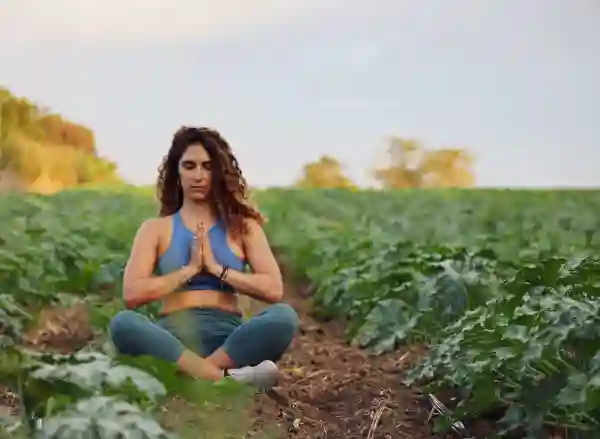

Yoga for your dosha
It’s now well-known that yoga has many powerful physical, emotional and spiritual health benefits. The NHS recommends that yoga practice is beneficial for people with high blood pressure, heart disease, aches and pains, depression and stress, and there's now evidence to prove this.
If you're familiar to yoga, you might know about the different types; from Hatha Flow and 'hot' Bikram to Iyengar and restorative. If you're new to practising, there's no need to be put off by the variety, yoga is accessible for everyone, not just the super-toned and flexible.
Each type of yoga can have different effects on your mind and body. One way to work out which type of yoga is best for you is to look your dosha, or mind-body type - but you'll need to take our dosha quiz first if you aren't sure which you are.
What type of yoga is right for your dosha?
Vata: Calm, quiet, restorative, warm
Pitta: Calm, quiet, restorative, cool
Kapha: Stimulating, dynamic, warm
In this light, we each have different needs, and we can subtly tailor our practice to help bring ourselves back into balance. Read on for some dosha balancing tips.
Yoga for vata or vata imbalance
Whether it’s through diet, lifestyle changes or herbs, vata types are calming, warming, strengthening, consistent and grounding. Vata types like exercise, movement and trying out new things so you can easily try out new yoga postures. Yoga is a soothing way for you to exercise, compared to activities like running, spinning or squash, which you might also enjoy, but calmness is necessary for vata types who can be anxious at times.
Vata types are most suited to a gentle, slow practice and might benefit from the massaging actions of yoga which can help to release nervous tension and restore balance. Calming postures help balance feelings of fear, worry or anxiety. Yoga can also help with common vata issues like constipation and join paint.
Best class to try: A Hatha class, which will allow you to hold postures for a little longer so you can focus on calm and deep breathing
Best poses for home: Get to grips with standing poses - like mountain and tree pose to help you stay grounded
Yoga for pitta types or a pitta imbalance
Pitta types are most suited to relaxing, surrendering, forgiving and gentle yoga. This requires deep, relaxing breaths and quiet sitting between strong postures to release any inner physical or emotional stress.
Pitta types have strong focus and determination, so you’re likely to have a disciplined and determined practice. However, you tend to overheat and get irritable, and may overdo a posture, pushing yourself too hard. You may also be a bit of a perfectionist, sticking to postures you can do well and ignoring the ones you need to work on. As your type has a tendency to accumulate heat, your yoga practice should cool and calm, so we recommend limiting hot yoga classes as you’re fiery enough.
Remember yoga is not a flexibility competition and isn’t a competitive practice in general, so try not to be judgemental or critical of yourself if poses aren’t coming together as quickly as you’d like.
Best class to try: Vinyasa for a more upbeat yoga class, or restorative for complete relaxation
Best poses for home: Twists, side body openers and cobra are all good for balancing pitta
Yoga for kapha types or kapha imbalance
Kapha types are stimulating, moving, warming, lightening and expressing. This can be achieved through a dynamic, active yoga practice done for at least an hour. Stimulating, heating forms of yoga also suit your needs well. So, you can do the more meditative type of poses but need to balance these out with more active postures too to keep things moving.
Strength poses are best suited to your type, as you tend to have strong joints and muscles. Poses that promote flexibility are also key to counter the kapha tendency to stiffness. Most postures are great for your type, as you will benefit from all forms of stretching and movement.
Kapha types are likely to have a steady and consistent yoga practice… once you get going. You’re also likely to remain emotionally calm and level-headed in your practice. However, there may be a tendency to be quite sedentary so you may need some support with motivation to complete a full yoga practice.
Best class to try: Vinyasa Flow or Bikram 'hot' yoga
Best poses for home: Sun salutations, chest and shoulder openers and headstands or shoulder stands for opening the lungs and clearing mucous

Author: Jo Webber
Head of Herbal Education
As a B.Sc. qualified Ayurvedic practitioner and yoga teacher, Jo is passionate about bringing these two ancient sciences together to help people feel empowered about their health. Jo has put her post-graduate certificate in education to good use, co-founding the Ayurveda academy to help others learn of the wonders of Ayurveda. Jo has also earned a Masters degree in human sciences from Oxford University and has taught in several schools
Qualifications:
B.Sc. qualified Ayurvedic practitioner and yoga teacher
Years of experience:
20 years as a Hatha yoga teacher/ayurvedic practitioner
Professional Registrations:
Member of the Ayurvedic Practitioners Association
